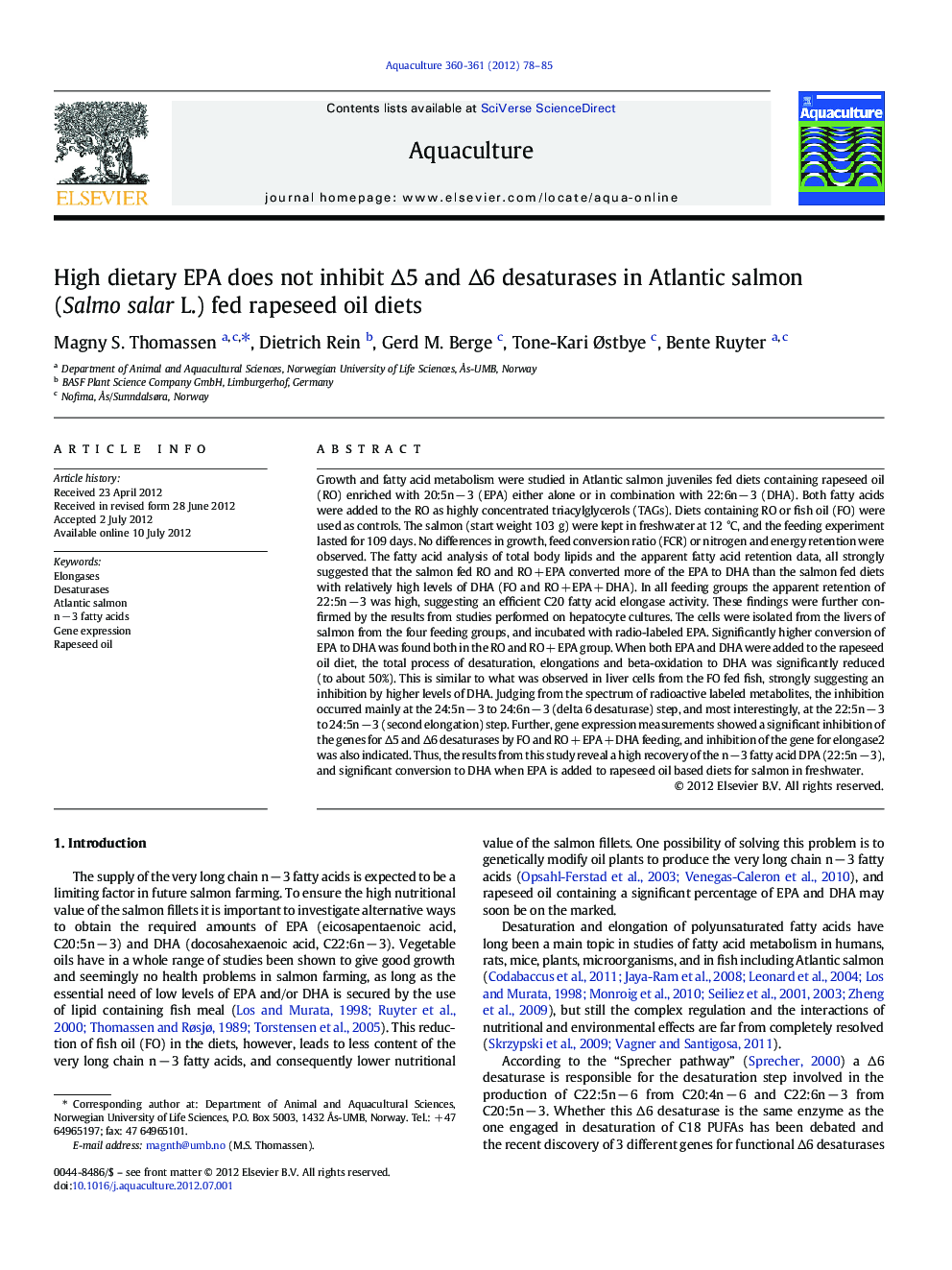| کد مقاله | کد نشریه | سال انتشار | مقاله انگلیسی | نسخه تمام متن |
|---|---|---|---|---|
| 2422436 | 1552886 | 2012 | 8 صفحه PDF | دانلود رایگان |

Growth and fatty acid metabolism were studied in Atlantic salmon juveniles fed diets containing rapeseed oil (RO) enriched with 20:5n − 3 (EPA) either alone or in combination with 22:6n − 3 (DHA). Both fatty acids were added to the RO as highly concentrated triacylglycerols (TAGs). Diets containing RO or fish oil (FO) were used as controls. The salmon (start weight 103 g) were kept in freshwater at 12 °C, and the feeding experiment lasted for 109 days. No differences in growth, feed conversion ratio (FCR) or nitrogen and energy retention were observed. The fatty acid analysis of total body lipids and the apparent fatty acid retention data, all strongly suggested that the salmon fed RO and RO + EPA converted more of the EPA to DHA than the salmon fed diets with relatively high levels of DHA (FO and RO + EPA + DHA). In all feeding groups the apparent retention of 22:5n − 3 was high, suggesting an efficient C20 fatty acid elongase activity. These findings were further confirmed by the results from studies performed on hepatocyte cultures. The cells were isolated from the livers of salmon from the four feeding groups, and incubated with radio-labeled EPA. Significantly higher conversion of EPA to DHA was found both in the RO and RO + EPA group. When both EPA and DHA were added to the rapeseed oil diet, the total process of desaturation, elongations and beta-oxidation to DHA was significantly reduced (to about 50%). This is similar to what was observed in liver cells from the FO fed fish, strongly suggesting an inhibition by higher levels of DHA. Judging from the spectrum of radioactive labeled metabolites, the inhibition occurred mainly at the 24:5n − 3 to 24:6n − 3 (delta 6 desaturase) step, and most interestingly, at the 22:5n − 3 to 24:5n − 3 (second elongation) step. Further, gene expression measurements showed a significant inhibition of the genes for Δ5 and Δ6 desaturases by FO and RO + EPA + DHA feeding, and inhibition of the gene for elongase2 was also indicated. Thus, the results from this study reveal a high recovery of the n − 3 fatty acid DPA (22:5n − 3), and significant conversion to DHA when EPA is added to rapeseed oil based diets for salmon in freshwater.
► We have studied the regulation of PUFA metabolism in farmed Atlantic salmon.
► We have studied effects of dietary oils on activity of desaturases and elongases.
► More than 100% apparent recovery of 22:5 n-3 suggests high C20 elongase activity.
► Results indicate inhibition of desaturases and elongases by DHA but not EPA.
► Only fish fed DHA showed inhibition of delta ∆5 and ∆6 desaturase gene expression.
Journal: Aquaculture - Volumes 360–361, 9 September 2012, Pages 78–85